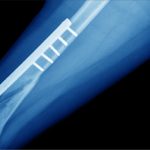Prostate cancer occurs in the prostate, a gland in the male reproductive system. Read more about prostate cancer here.
What are the precancerous conditions for prostate cancer?
Conditions that have the potential to develop into cancers are termed precancerous conditions. Cancer that starts in the prostate gland is called prostate cancer and the most common of the precancerous conditions of prostate cancer are as follows:
- Prostatic intraepithelial neoplasia (PIN)
- Proliferative inflammatory atrophy (PIA)
- Atypical small acinar proliferation (ASAP)
Prostatic Intraepithelial Neoplasia:
In prostatic intraepithelial neoplasia, the epithelial cells of the prostate gland are abnormal in their appearance and their function. These cells may be confined to the linings of the sacs of the prostate or the lining of the ducts that transport semen. In either case, the lining of the prostate remains intact confining the abnormality to the epithelial cells. If however, this lining is ruptured causing these abnormal cells to reach the prostate gland, it can develop into prostate cancer. PIN is categorized as:
- Low grade
- High grade
The cells look highly abnormal in high grade PIN where as they do not in low grade. Only high grade PIN is associated with prostate cancer and is a known precancerous condition.
PIN is not detectable through a DRE nor does it raise the PSA levels. It is usually diagnosed during a prostate biopsy or through a transurethral resection of the prostate (TURP) which is a treatment for a condition called benign prostatic hyperplasia.
Proliferative Inflammatory Atrophy:
PIA is a condition associated inflammation and tissue degradation (called atrophy) and is characterized by very small abnormal cells of the prostate gland rapidly multiplying in the areas where chronic inflammation is present. This is a known precancerous condition for prostate cancer too, though it is still not confirmed if it develops into high grade PIN which then develops into prostate cancer or if it follows a different pathway of progression.
PIA may be caused due to infection, exposure to toxins, such as additives, pesticides, pollutants and other environmental factors. Read about causes of prostate cancer here.
Atypical Small Acinar Proliferation:
Atypical small acinar proliferations are premalignant lesions on the prostate which can be found in about 5% of the prostate biopsies and about 40% of these cases are expected to develop into prostate cancer. In this condition the cells look abnormal but are too few in number to confirm malignance. If repeated biopsies show this condition, doctors suggest the patient to get treated.




